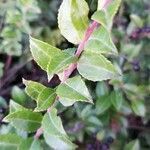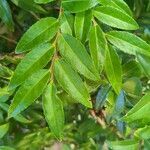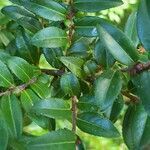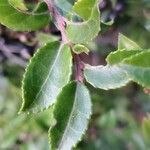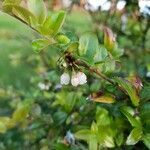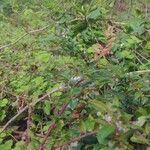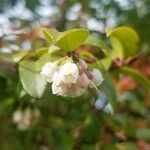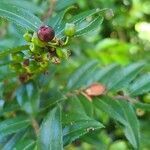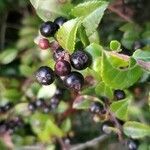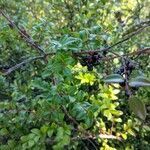An evergreen shrub. It grows 0.9-1.5 m high and spreads 0.9-1.5 m wide. The leaves are 25 mm long and oval. They have teeth along the edge. The flowers are small and white or pink. They are tinted with red. They are in clusters. The fruit is blue-black. They are 5 mm across and edible.
